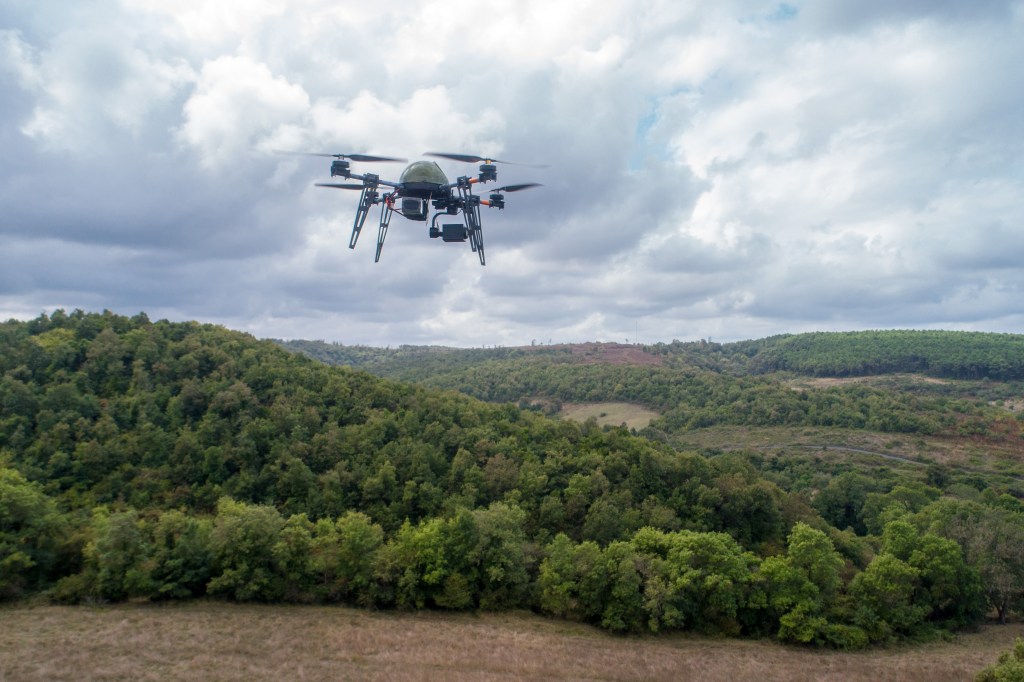The aerospace market is evolving quickly and merging with other segments of tech, making it an exciting space for both startups and investors — but the complications of the global pandemic are being felt by both.
Bessemer Venture Partners investor Tess Hatch has been helping guide companies in their portfolio through these strange times, and has been rolling with the punches herself.
Hatch recently spoke to us about the advice she’s been offering startups, which companies are being hit hardest and where opportunity still lies in the frontier tech world. (This interview has been edited for length and clarity.)
Austerity measures and hard-hit hardware
TechCrunch: I’m interested in how the virus is affecting things in the investment world. Have you made any official accommodations, like a change of strategy, or putting off key investments, things like that?
Tess Hatch: Of course, we’re advising startups on things to do, like their employee safety, and implementing working from home, and tools and tips and tricks that can help that. Especially when it comes to hardware companies — it’s kind of hard to work from home when you’re manufacturing.
We’re advising them to really watch their burn, because their top line is not going to hit where they expected it to hit, like a double or triple revenue, it’ll maybe stay the same. If it increases even a little bit, they’re winning. We’re having these individual company-to-company conversations, just advising them on getting through, hopefully just these next couple of quarters, but it could be next year plus.
There is the question of new deals that we were looking at and this is a time where entrepreneurs will find amazing opportunities to solve the most pressing/immediate societal challenges and we are here to invest in them. We’re still taking new pitch meetings, new deals, we’re still busy, just doing it in the comfort of our pajamas rather than at the office.
So would you say that it has affected the frequency or the cadence of your investments, on a larger scale?
There’s really been like three partnership meetings since craziness happened. And the number of deals that we’ve talked about in the presentations we’ve had, those have remained the same, but ask that question in three more weeks, and I’m sure it I’ll have a better answer.
One of the funny things we’re talking about is that investors, one of their favorite things is to be able to predict how the future, at least the next year or two, is going to go. But this is one of the greatest times of uncertainty we’ve all lived through. So how are you approaching that when there’s so much that’s uncertain, but there’s so much that you need to know in order to effectively manage your portfolio, give advice and make sound investments?
Right now, it is shaking everything that we’ve believed in so strongly. However, we still are looking out, let’s say two to five-plus years. The real question is if this is going to be, with quarantining and lowering the curve, a little bit more under control by let’s say the summertime, or if this is going to be more than a couple of quarters, say a couple of years.
One of the many things we are advising is for our companies that are able, raise a bit of extra capital now while the water is shut off, but there’s still a little bit trickling from the showerhead… I have not seen anything like this in my short career, but there are partners at the firm who have been here 20-plus years and while they have never seen this particular situation, I’ve been amazed by their ability to deal with these unique challenges and advise our companies on how to get through this. It’s like you said, the uncertainty of just not knowing how long or how drastically this is affecting everything.
I think that the hardware companies that you mentioned, those may have it the hardest because they involve so much travel, so much mailing back and forth of prototypes for testing. Is there any specific advice that you have for hardware companies that are trying to build a product right now?
Unfortunately, most of them have stopped all travel. We’re trying to do as much as we can virtually. The majority of them are smaller teams that are actually making, let’s say, a drone, or an autonomous robot, and they’re just staying six feet apart and taking all of the necessary precautions, doing every-other shifts. So if, say it’s a six-person team, three of them are working in the morning and three of them are working in the afternoon to increase the distance between all of them. The offices — especially where we’re building drones — are huge, so there’s tons of space for everyone.
The real issue though, is our customers aren’t showing up to work, you know? One of our companies, Impossible Aerospace, sells drones to police and fire departments. This is one of the best times to use drones to deliver emergency medical supplies, or even toilet paper and hand sanitizer to people in need. The ones that do have the drones are happy and they’re using them, but the ones that don’t, they’re so overwhelmed with everything else that’s going on.
There are always leads to follow up on, contracts to hammer out and negotiate, improvements you can make to your sales process. Is this something that there actually is a lot of, that even hardware companies can focus on in these downtimes?
At a high level, I’m sure there are people in the organization that can turn and do that. But think about a sales person or business development, there are certain ones that, their entire job is shaking hands or going to these events. I mean, think of marketing spend with no conferences this year, and all that upsets.
Aerospace between air and space
You wrote an article last week for us about a sort of neglected area of the new space industry, the stratosphere. I feel like people have been chasing this for a long time, but that the drawbacks of being in atmosphere are too much, especially when LEO [low Earth orbit] is getting so cheap. Do you really think that things like balloons and blimps are in the cards?
I agree with you that LEO is definitely becoming more accessible and cheaper and this market is shifting from price per kilogram to time to orbit, with launch vehicles like Rocket Lab’s coming to fruition.
However, there are still so many things one needs to do to modify their sensor for LEO. And with LEO, you’re only over the same area of interest for let’s say 15 minutes of a 90-minute orbit. And even then, the revisit rate over the same spot of Earth, it depends on the orbit, but it’s daily, weekly, sometimes more than weekly. The only way to stay over a single point in space is GEO [geosynchronous orbit], and that’s 36,000 kilometers versus 500 to 1,200 [for LEO].

You can take a cell phone, throw it up onto a balloon, and loiter over a single point. It comes with its own challenges like the intense winds in the stratosphere… Loon has had a lot of issues doing it. Loon is able to loiter over the entire country of Peru. That’s… not very good! We need a double-digit kilometer radius number for it to be likable. Also, as you can imagine, the sensors are moving around a lot up there. So it’s even more difficult to get the resolution necessary.
But I think the question you’re getting at is, why is the structure that much different from LEO and GEO? That’s the question I think space, aerospace, even drones are facing. We have communication and Earth observation, and everyone has flocked to and has really saturated those two sensors. Can you come up with some new creative sensors to put on drones and platforms in the stratosphere and satellites? And hey, I wish I had an entrepreneurial bone in my body. I don’t, but I’m looking forward to entrepreneurs coming up with smart ones to utilize and perhaps a new platform will open one’s imagination to something different.

And are you investing in any way? Have you gotten any interesting pitches along those lines?
Not really. Communications is so crowded, and I won’t compete with SpaceX or Amazon Kuiper or OneWeb capital. And then, observation, I mean, Planet is clearly the winner there with lots of tiny ones [i.e. satellites]. I think Spire does a really good job of creating creative sensors, they have a GPS-RO sensor for weather data AIS for maritime and ADSB for plane tracking. Those all complement each other very well. There was one that was doing methane detection, and then there’s another one doing RF spectrum… I don’t know how big that market is.

And why do most of these need to be space when maybe a drone or a plane would be better? I think weather has the potential to be a lot bigger than it is. I mean, our weather forecasts and data are terrible just for consumers — imagine planning a business around good weather data and the amount of money that all these companies could save.
It feels like if someone set up their own private weather balloon over several of the big metro areas, they could serve 100 million people perfectly up to date weather data and charge for that — $1 a month or something.
You think people will would pay $1 a month for better weather data?
I think they might, but not directly. Maybe as part of a larger suite, you know, something like a local news app that has exclusive stuff like that. It’s hard to figure out… ultimately you probably just have to be a licensed model. But it’s hard to compete with National Weather Service. You’d have to be very local.
No, I totally agree with you, though I think this needs to go private because the public sector isn’t isn’t able to produce high-quality or enough data for businesses to make decisions. But then, what’s the distribution center, who’s going to own and operate it? All of those pieces need to be figured out. I was thinking about it from a business perspective, or an enterprise sales perspective, but even consumers, like you mentioned, would want this information. Apple would be a great owner of this, but I doubt they want to get into the weather.
Flying hype machines
On that note, what other areas of the new space and aerospace industry don’t have enough popular attention? Everybody pays attention to launch, everybody pays attention to satellite and smallsat manufacturing and stuff like that. But very few people, for instance, talk about ground services, ground radar, things like that.
I’m going to say within the aerospace industry, the stratosphere is not getting paid enough attention when when it comes to venture capital investment. It’s just also early days of the market. I think it can grow as large as the existing space and drone or aircraft industry, there’s just huge potential. But on the space side, it’s interesting that the data analytics have sort of slowed down — all of the companies that analyze the images that the satellites take, I haven’t heard a ton from them recently. Orbital Insight is leading the charge there, but I used to hear a lot more from them.
Descartes Labs snaps up $20M more for its AI-based geospatial imagery analytics platform
On the drone side, I think drone package delivery is overhyped. We need to spend more attention on the regulatory foundation and the technology behind making it a reality. Right now there are tons of regulations restricting people from flying drones beyond visual line-of-sight, above people, at night, or drones carrying things. So all the package-delivery companies are building something that’s illegal right now. I think we need to spend more attention on a regulatory solution and foundation that the FAA will approve, and then we need longer flight time. When I say drones, I mean like little quadcopters, not the big EVTOLs [electric vertical take-off and landing vehicles], those are getting, again, too much attention. They’re not realistic. They’re not even on my radar.
Yeah — they call them flying cars, but really what they are is just private helicopters that happen to be electric. It’s not going to change the world of transportation, it’s just going to be like a new thing that rich people take to and from the airport. People are talking about it like cities will be built around these EVTOL fleets, but it’s going to be so expensive, and they’re so loud, yet everybody seems to go crazy over it.
So you don’t think in, let’s say 50 or 100 years, the prices will decrease and they’ll make the unit economics work by perhaps building bigger ones? Like if we think back to the early days of flying commercial aircraft, it’s for the rich and the elite, and eventually, we now have $49 Southwest flights from LA to San Francisco, which I love. I agree with you upfront, it’s loud, the economies probably won’t work. Sure, it’s electric. But it’s gonna be ridiculously expensive.
Looking out like 50 years, they’ll certainly be around but I feel like the transportation economy is changing so fast in so many ways that, a fleet of private helicopters? They take up so much space, they need all this complex logistics, they’re very dangerous in a lot of ways. I mean, they weigh like 50,000 pounds and they’re flying over cities all day long versus you know, self-driving cars which can take all kinds of forms and do all these practical things. Self-driving cars, I think, are going to lead 95% of the change to the transportation ecosystem.
I actually like the Caltrain. I mean, the EVTOLs of the world talk about going from San Jose to San Francisco in 20 minutes, but you can do that with a high-speed train.
Hardware versus software investing
In your mind, how does investing in space and aerospace differ from investing in software and services, maybe on more of a philosophical level?
Yes, the feedback cycle and the capital necessary for hardware differs from software. The feedback cycle is longer because we actually have to build a tangible asset, versus changing a line of code and pushing it to the ether. And that asset cost a little bit more money than a software engineer changing that line of code. But I do think the return on investment is the same.
So while it may take a little bit longer and take more capital, when you do the math on returns, we should set hardware to the same standards as we do software. However, I’m seeing a huge blend of software and hardware, for example, Rocket Labs is a launch vehicle company. Yet you change a line of code, and it changes the orbit that the satellites go in, or something with the engine, which is the first of its kind and it has this intense software element behind it.
Iris Automation is a beyond visual line-of-sight collision detection and avoidance system for drones, it’s a regulatory necessity for drone package delivery to even come to fruition. Yes, it’s a camera that feeds into the GPU on the drone that acts analogous to a pilot’s eyes. But that GPU has terabytes’ worth of data that can detect, classify and then determine if an evasive maneuver needs to be made to get out of the way. So it’s technically a hardware company and we’re selling to hardware companies, but it’s all of our engineers, all of our work is, a majority anyway, software-based. I think the blending together and complementing help one another and ultimately, hardware investments, or companies that have a hardware component can be as successful as a software company.
Some people get uncomfortable when the ROI is several years out and the cost is higher. And hardware is hard. I don’t want to say software is simply easier, but it’s more easily quantified in some ways.
I think you’re also coming from an engineer’s perspective, which is great, I totally agree. I also think why perhaps investors or sales people are scared of hardware is that they think of these as one-off, non-recurring margin sales. So you sell the drone for $30,000, and it costs us $20,000. Not great margins. It’s one time, there’s no recurring element.
What hardware companies need to do is they need to steal the annual recurring revenue aspect of software companies. Just because they’re hardware doesn’t mean they can’t do that. The drone company I mentioned, it’s a recurring subscription to the algorithm that’s getting better every day, but it runs on a piece of hardware that they sell. When a hardware company can still have the unit economics and the metrics and ARR that software companies have, that’s where the magic happens.
Thanks so much for joining us.
This interview was edited after publication in the interest of clarity.
































Comment